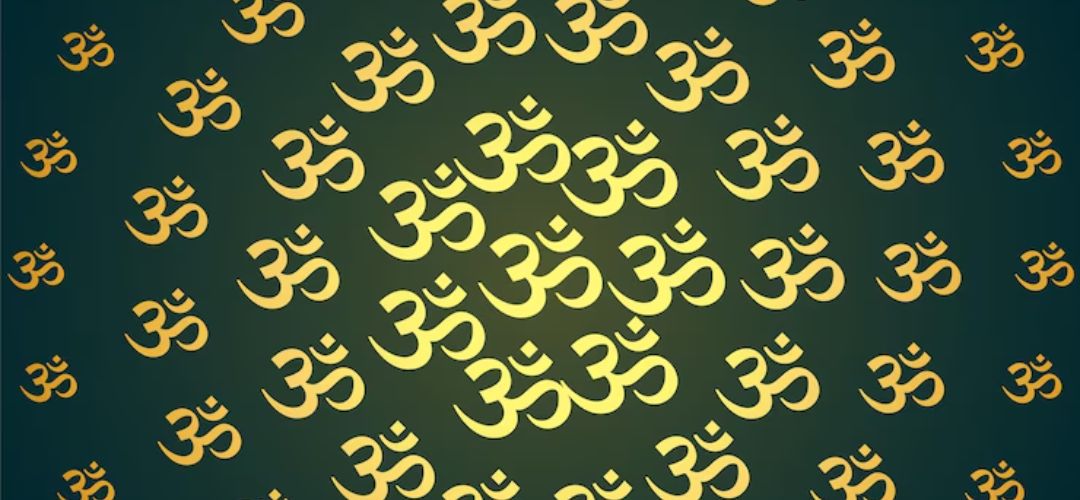Eternal Emblems: Exploring the Hindu Symbol for Love and Its Spiritual Significance

Love, in all its forms, is a cornerstone of human experience. In Hinduism, love is not merely a fleeting emotion—it is a cosmic force that binds the universe together. From divine romances to sacred rituals, love permeates Hindu culture and scripture. Among the many symbols and deities that represent affection, harmony, and unity, the Hindu symbol for love holds a special place in both art and spirituality.
The Language of Symbols in Hinduism
Before diving into specific symbols, it’s essential to understand the importance of symbolism in Hinduism. The religion uses an extensive range of symbols to convey profound spiritual truths. These symbols—whether drawn, carved, or visualized—are often multi-layered and serve to guide devotees toward deeper realization.
Symbols can represent gods, virtues, philosophical concepts, or human emotions. Love, being one of the most potent forces, is depicted through several powerful symbols, each offering unique insights into its meaning and purpose.
The Om Symbol (ॐ): Love as Divine Connection
Though commonly known as the symbol of universal consciousness, Om (ॐ) also embodies divine love. In many Hindu traditions, chanting Om is a form of bhakti—a devotional practice that bridges the gap between the devotee and the divine.
When chanted with pure intent, Om opens the heart chakra (Anahata), which is closely associated with love, compassion, and harmony. This sacred sound aligns the mind, body, and soul, creating a loving internal and external atmosphere. Thus, while Om may not be the exclusive Hindu symbol for love, it certainly symbolizes the divine essence of love that connects all beings.
Anahata Chakra: The Heart Center of Love
The Anahata Chakra, or heart chakra, is the direct energy center of love in the Hindu spiritual system. Located in the center of the chest, Anahata governs relationships, empathy, forgiveness, and selfless love.
The traditional symbol of the Anahata chakra is a lotus with twelve petals containing the Sanskrit letters kam, kham, gam, gham, ngam, cham, chham, jam, jham, nyam, tam, and tham. In the center of the lotus lies a six-pointed star made by the intersection of two triangles—one pointing upward and the other downward—symbolizing the union of male and female energy, a visual metaphor for romantic and divine love.
In this context, the Hindu symbol for love is not a single image but a complex spiritual diagram that reflects balance, union, and unconditional affection.
Kamadeva and Rati: Divine Embodiments of Love
Kamadeva, the Hindu god of love, desire, and sensuality, is often likened to Cupid from Greco-Roman mythology. He is depicted with a bow made of sugarcane, strung with honeybees, and arrows tipped with fragrant flowers like jasmine and lotus.
His consort, Rati, is the goddess of passion and love. Together, they represent the romantic and sensual aspects of love, and their union symbolizes both physical attraction and emotional intimacy.
The iconography of Kamadeva—his bow, his arrows, and his floral motifs—has become a cultural Hindu symbol for love, especially during springtime festivals like Vasant Panchami and Holi, which celebrate renewal, beauty, and romantic desire.
The Lotus Flower: Purity in Love
Another powerful Hindu symbol for love is the lotus flower. It grows in muddy waters yet emerges pristine, symbolizing spiritual enlightenment, purity, and divine love that transcends the material world.
The lotus is closely associated with various deities, including Lakshmi (goddess of wealth and beauty) and Vishnu (the preserver), both of whom embody the principle of loving, sustaining relationships. The blooming of the lotus is often used as a metaphor for the awakening of the heart and the unfolding of unconditional love.
In Hindu wedding rituals, the lotus is frequently used to symbolize the beginning of a harmonious and pure marital bond.
Radha and Krishna: The Eternal Love Story
Perhaps the most iconic representation of divine love in Hinduism is the eternal romance between Radha and Krishna. Their story transcends time and space and is revered not just as a romantic tale but as an allegory for the soul’s longing for the divine.
Radha’s unwavering devotion and Krishna’s divine charm depict an ideal where love is both ecstatic and spiritually liberating. Temples dedicated to Radha-Krishna often depict their loving gaze and playful interactions, becoming sacred spaces where the Hindu symbol for love is not just visual but felt.
Radha and Krishna are frequently shown with peacocks, flutes, and forest backdrops, each symbolizing different dimensions of love—beauty, harmony, and freedom.
The Peepal Tree (Ficus Religiosa): Shelter of Sacred Love
The Peepal tree, also known as the Bodhi tree, holds a sacred status in Hinduism. It is considered a symbol of fertility, prosperity, and love. In many rural Indian traditions, couples tie threads around Peepal trees during rituals to pray for a strong marital bond and the birth of healthy children.
This living tree, with its heart-shaped leaves and long-standing presence in religious mythology, serves as a natural Hindu symbol for love and continuity in relationships.
Mandalas and Yantras: Geometric Love
In Hindu Tantra and Yoga traditions, mandalas and yantras are geometric representations of spiritual concepts. One of the most famous is the Sri Yantra, which includes interlocking triangles symbolizing the cosmic union of male (Shiva) and female (Shakti) energies.
These sacred geometries are meditative tools, often used to attract or focus loving energy in both spiritual and personal life. The balance of opposites within the yantra symbolizes the completeness of love when it is rooted in harmony and respect.
Hindu Wedding Symbols: Love in Ritual
Hindu weddings are treasure troves of symbols that represent love. The mangal sutra (a sacred necklace), sindoor (vermilion powder applied to the bride’s forehead), and seven pheras (saat phere) around the sacred fire all encapsulate vows of love, loyalty, and lifelong companionship.
The fire itself, or Agni, is a witness to the couple’s union, and the clockwise movement around it signifies an ever-evolving journey of love and understanding.
These marital symbols have become cultural embodiments of the Hindu symbol for love, marking the transformation of individual lives into a shared destiny.
Love in the Bhagavad Gita
In the Bhagavad Gita, Krishna speaks of bhakti yoga, the path of devotion. He states:
“To those who are constantly devoted and who worship Me with love, I give the understanding by which they can come to Me.”
– Bhagavad Gita 10.10
Here, love is not limited to human relationships; it is expanded into a spiritual practice, a path to moksha (liberation). This eternal love, known as Prema, is selfless and transcends ego—a concept central to Hindu spirituality.
Conclusion: Love as a Sacred Principle
In Hinduism, love is not just an emotion; it is a sacred principle that operates at all levels—physical, emotional, and spiritual. The Hindu symbol for love can be seen in divine icons, sacred geometries, nature, and even human relationships.
Whether it is through the flower-tipped arrows of Kamadeva, the resonant syllable of Om, the sacred lotus, or the divine romance of Radha and Krishna, these symbols invite us to experience love as something divine, transformative, and eternal.
By understanding and honoring these symbols, we not only deepen our appreciation for Hindu culture but also align ourselves with a timeless force that connects us all—love.






